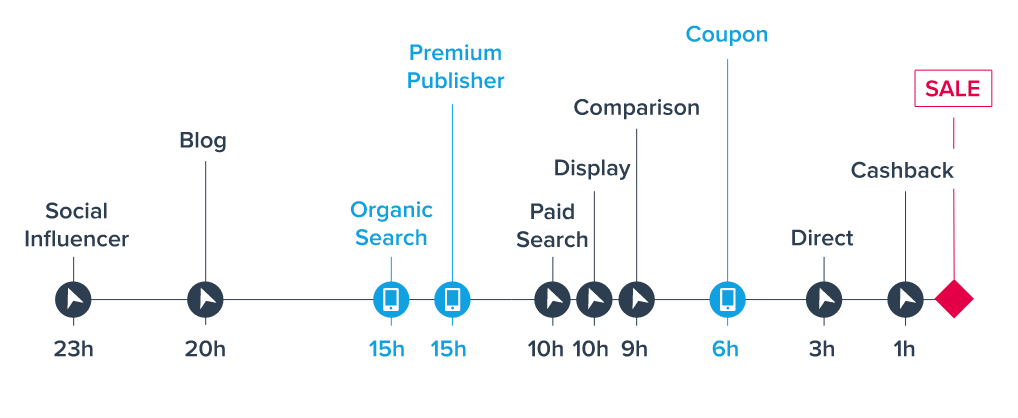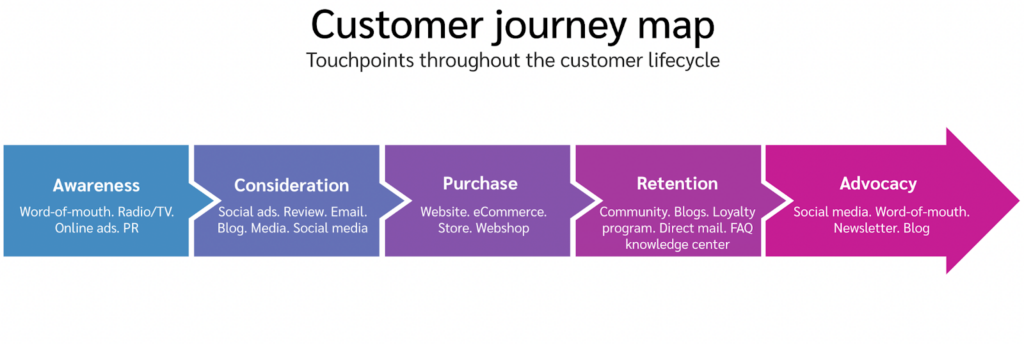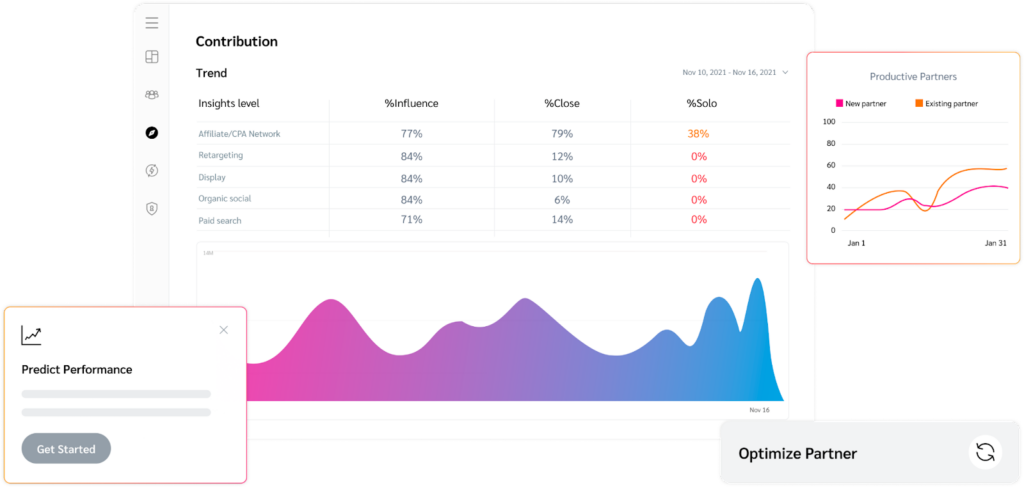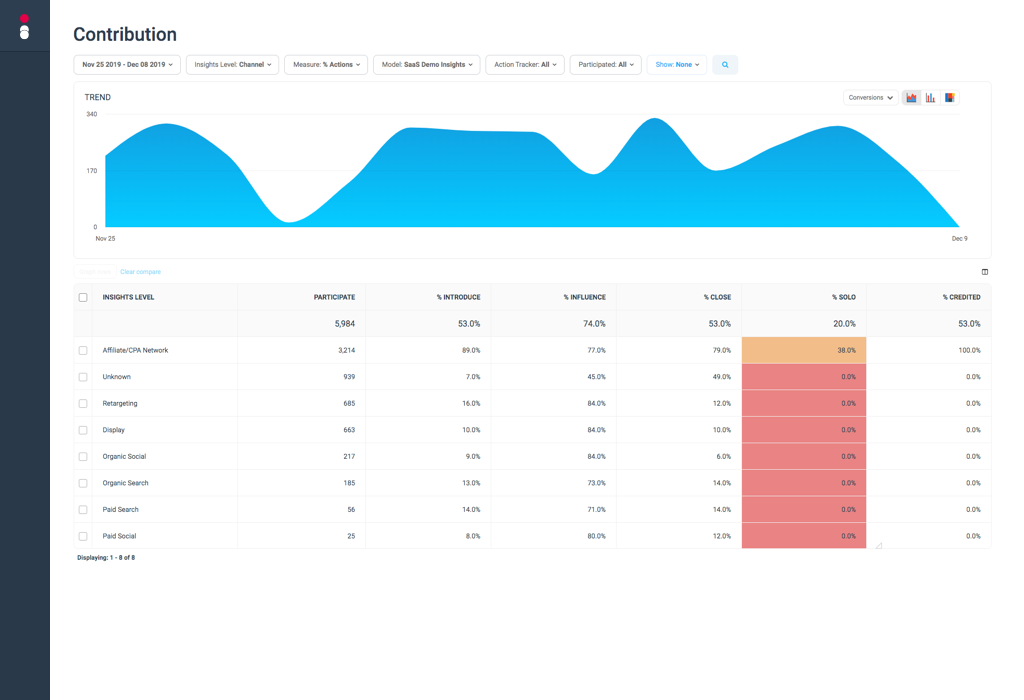In this guide you’ll discover answers to questions like:
Adventurists hiking Mount Kilimanjaro can choose between seven established routes to reach the summit. Similarly, affiliate marketing introduces brands to a diverse partner mix—like, publishers, influencers, and review sites—creating multiple conversion paths to convert potential customers to leads.

Conversion paths are a customer’s click journey to complete a desired action—including placing an order, installing an app, or completing a subscription. Accurately tracking conversion paths helps brands:
- identify touchpoints to optimize
- strategize ways to improve the customer experience
- recognize top-performing partners to reward
- allocate budget for the best return on investment [ROI]
4 common types of conversions
Just as reaching Mount Kilimanjaro’s peaks is a hiker’s ultimate goal, the action taken at the end of a buyer’s journey is a brand’s conversion goal. Brands can choose multiple types of marketing actions, which fall into four conversion types.
1. Lead conversion
Brands with high-ticket products and services commonly use lead conversions because they require more research and information before purchasing. With lead conversions, customers provide their contact information in exchange for an offer.
2. Video view conversion
Video view conversions determine success by how long a customer views a certain amount of a video, from as little as 3 to 30 seconds, depending on the platform. Brands use video view conversion along the sales funnel—to introduce a brand at the top, offer educational content in the middle, and reassure with customer testimonials at the bottom.
3. Sales conversion
Any action that leads to exchanging money for a product or service refers to a sales conversion. Typically, a customer has navigated the buyer’s journey and reached a point where they’re comfortable making a purchase.
4. Click-through conversion
With click-through conversion, a customer arrives on your landing page after clicking a CTA button on a partner’s promotional channel. The post-click landing page entices the customers with a higher-value action, like installing an app, making a product purchase, or signing up for an email newsletter.
A quick customer journey overview
Modern shoppers [81 percent] rely on research from multiple trusted online sources before purchasing. Each interaction—opening an email, reading review sites, or watching an influencer’s recommendation video—creates unique touchpoints along the customer journey.
Customers will often revisit specific touchpoints as they evaluate a product or service. High-ticket purchases, such as buying a car or selecting a medical aid scheme, typically involve multiple touchpoints and a longer sales cycle.
Every touchpoint allows brands to leverage the power of affiliate partnerships to engage with their audience authentically. Customer journeys are vast and varied. For example, a customer is interested in booking a family vacation:
- Influencers (@thefamilyvoyage) help inspire the destination.
- Publisher sites (Condé Nast Traveller) provide information on the destination’s top things to do, places to visit, and travel tips.
- Comparison sites (Travel Supermarket) offer the best-priced holiday packages from online travel brands.
- Review sites (Tripadvisor) deliver travel insights on restaurants, hotels, airlines, and activities.
- Re-targeting ads by an online travel brand encourage travelers to book an all-inclusive family vacation.

Top-of-funnel partners drive inspiration and may lose commission if brands use the last-click attribution model. Optimizing the conversion path to provide rewards along the journey will motivate partners to excel at various stages.
Strategies to optimize conversion paths for success and increase ROAS
Employ multiple attribution models
Besides accurately tracking partners to credit for conversions, the marketing attribution model provides key data points to help understand the buyer’s journey. Tracking technology from Partnership Management Platform, like impact.com, guide brands in analyzing attribution data to gain important insights:
- Identify the best introducer, closer, and influencer partners.
- Understand the consumers’ cross-device conversion paths.
- Pinpoint the partner mix that delivers optimal conversion rates.
- Determine media investments with high synergy.
- Highlight glitches in the customer journey to fix.
Using various attribution models in your marketing campaign will clarify the multifaceted customer journey. There are seven types of attribution models.
- Last-click attribution* assigns credit for a conversion to the last touchpoint in the customer journey—the channel influencing the customer to complete the desired marketing action.
- First-click attribution* awards credit for a conversion to the first touchpoint in the buyer’s journey—the channel that introduces a customer to a brand.
- Last-to-cart attribution* credits a conversion to the last click in a conversion path before a consumer adds an item to their shopping cart.
- Linear attribution is an even model that rewards every touchpoint in the customer journey equally for conversion.
- Position-based attribution distributed credit across all touchpoints along the customer journey. Brands can customize the reward distribution to their unique business model. However, the standard position-based attribution gives 40 percent credit each to the first and last-touch and 20 percent distributed to the remaining touchpoints.
- Time decay attribution allocates the majority of credit to touchpoints closest to the conversion, and the previous events receive diminishing credit.
- Algorithmic attribution uses machine learning, advanced statistical modeling, and inferences to assign credit for conversions to each touchpoint based on effectiveness.
Note: * indicates attribution models available on the impact.com platform
Listen to data with insightful reporting tools.
Optimize partnership with actionable insights from reports like the Contribution Report. Contribution insights help discover how often a partner’s contributions are truly incremental and how frequently each partner gets credit for driving conversion. It also allows brands to visualize each partner’s contribution as an introducer, closer, or influencer at every point in the funnel.

With a better understanding of partner contribution, brands can align their commission strategy based on the value. For example, if you identify a partner on a last-click contract that acts as an introducer, set up participation bonuses to reward partners for their conversion contributions.

Plus, leveraging other reports like Top Paths Reports helps investigate trends in the Contribution Report. The Top Paths report identifies the most frequent paths that lead to conversions, with in-depth insights into total conversions for that specific path, average path time, average order value, and revenue generated.
Get on the right track to success
Conversion paths may take different turns, but like reaching the top of the mountain, the rewards are worthwhile. Strategize a plan to optimize the customer experience with partnerships and reach new heights of business growth.
Check out these impact.com resources to learn more about growing your partnership program:





